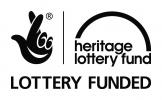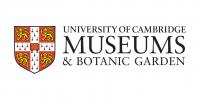The Cambridge bird collection includes skins, eggs and skeletal material. Among bird collections held in the museums of Great Britain, only that of the Natural History Museum at Tring is unarguably superior to this collection.
The original nucleus of the skin collection was formed by the birds assembled by Hugh Strickland (1811-1853). From these beginnings the skin collection grew to its present size – some 30,000 skins housed in purpose-built wooden cabinets. Over 90% of the material dates from the nineteenth century when Alfred Newton (Professor of Zoology and Comparative Anatomy from 1866-1907) was untiring in his efforts on behalf of the Cambridge collection and ornithology more generally. Although the material is now well-catalogued on a card index thanks to the outstanding curatorial efforts of C.W. Benson in the 1960s and 1970s, the exact number of species represented is unknown. It is likely to exceed 3,000, out of nearly 10,000 recognised bird species.
The size of the skin collection is sufficient alone to render it important, particularly as the majority of specimens were collected over a hundred years ago and therefore the collection data represents a major source of information on historical avian distribution. However, it is the quality of the material that renders the collection pre-eminent. Of especial note are 613 type specimens (289 valid) within the collection. Around half the type specimens were described by W. Swainson. Although many Swainson names are no longer valid, his names of Mexican birds largely do remain valid because political chaos precluded collecting in Mexico before independence in 1821.
Another highlight is some 260 drepanid honeycreepers from Hawaii, including 12 types. Like other taxa in this remote archipelago, the honeycreepers have suffered from Polynesian and later European colonisation, and many species, including those at Cambridge, are extremely rare.
Of particular historical interest are 12 finches from the Galapagos Islands collected on the Beagle voyage. These were not in fact collected by Charles Darwin himself but by a Beagle crew member named Fuller. Nevertheless, in the aftermath of the Beagle voyage, these Cambridge specimens were worked on, along with other specimens, by John Gould. Since Darwin himself had not kept adequate notes of where his own specimens were obtained, he could at the time make little sense of which species occurred alongside which other species on which island. Only when Gould had thrown light on these matters did their full significance dawn on Darwin.
An outstanding series of mounted British birds, consisting of 450 specimens representing 210 species, was presented to the Museum in 1950 by Clifford Borrer.
We hold around 10,000 clutches of bird eggs deriving from several major European collections (Buckley, Evans, Wilmot) plus the Hepburn collection from North America. The most important single collection is that of Newton and is largely based on eggs assembled by John Wolley. During Wolley’s tragically short life, he made a series of collecting trips from 1853-1857 to that area of Lapland now on the northern borders of Finland and Norway. Here he was the first scientific ornithologist to observe the nests of several species such as the smew, and he collected the eggs of many northern species only known in Britain as winter visitors.
The bird skeleton collection includes about 1700 more or less complete specimens, plus a further 500 or so sterna assembled by Newton. Probably the outstanding feature of the skeleton collection is the wealth of material from the Mascarene Islands (Mauritius, Reunion and Rodrigues). This material, largely obtained through the efforts of Edward Newton, brother of Alfred and a colonial administrator in Mauritius from 1859-1877, includes many rare or extinct forms, including a number of type specimens. Of the extinct forms, the most dramatic are the dodo from Mauritius and the solitaire from Rodrigues. Not only does the Museum have complete mounted skeletons of both, but also an exceptional quantity of bones to underpin taxonomic study of these unusual pigeons. Even more bulky is the collection of bones of moas, the huge extinct flightless birds of New Zealand.





